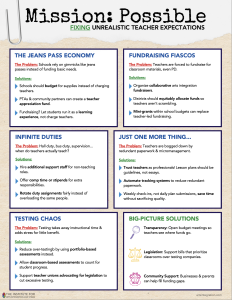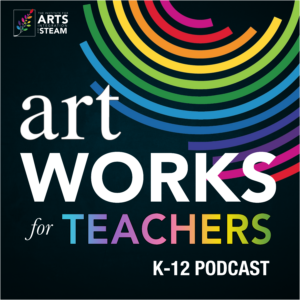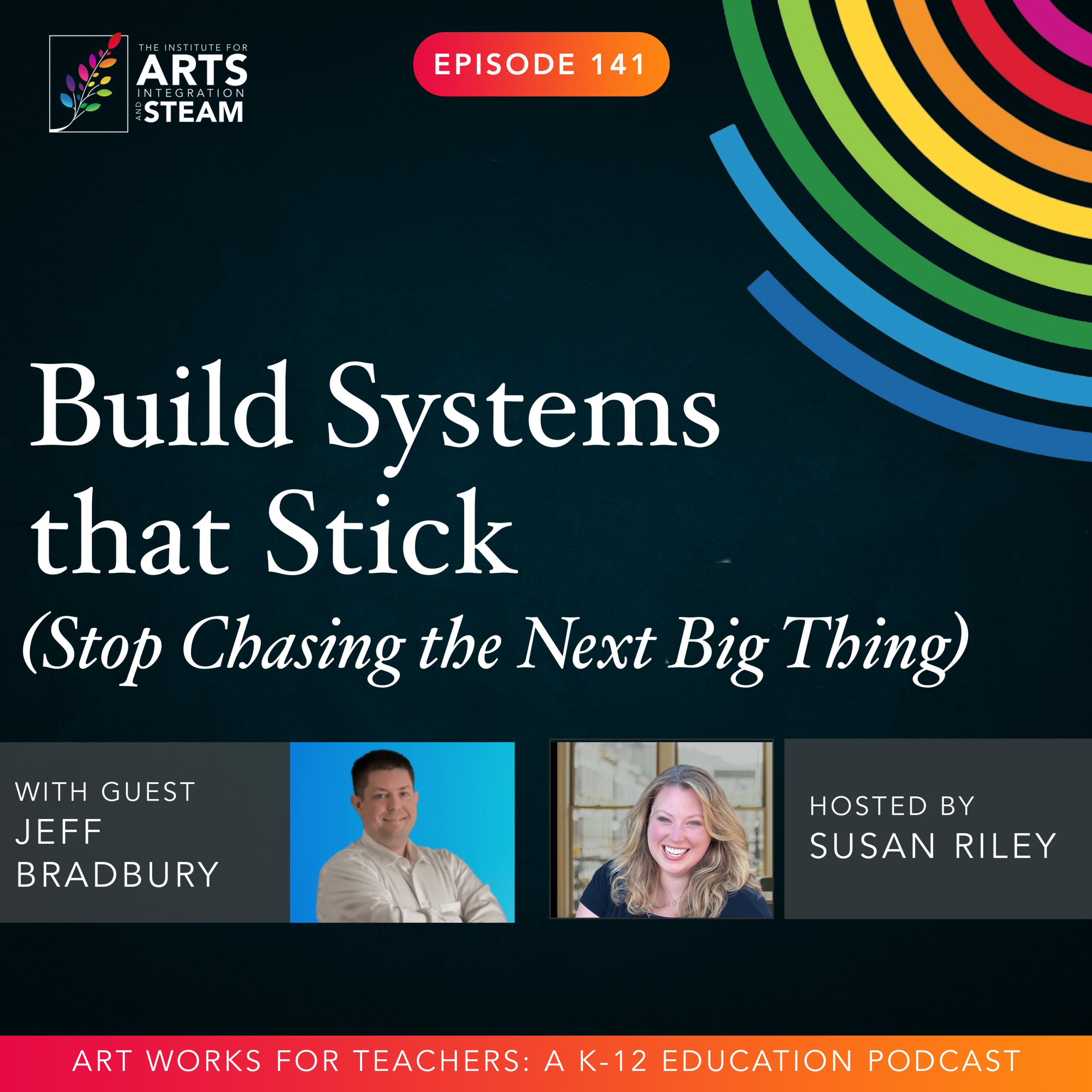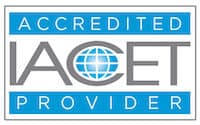ART WORKS FOR TEACHERS PODCAST | EPISODE 122 | 35:32 MIN
Mission Impossible: Unrealistic Expectations for Teachers
Enjoy this free download of the Mission: Possible resource.
Hello and welcome back to another episode of Art Works for Teachers. I’m your host, Susan Riley. And today, my friend, we’re gonna try to have a little bit of humor, but in a kind of satirical way, maybe. So today’s episode is all about the things that we ask teachers to do that are just absolutely ridiculous, because if you can’t laugh about it, you’re gonna cry, right?
If you have ever paid five bucks to wear jeans on a day or are voluntold to work unpaid hours or sold candy bars so that you can have pencils in your classroom, this episode is going to be for you. I have a lot of notes, a lot of stories to share, and I think that as educators we can all relate to this, but it’s not all fun and games. We’re also going to talk about things that we can do to overcome these unrealistic expectations, if you will, or at the very least, silly requirements that are put in place for our teachers when they really should be focused on things that are much more important. So we’re going to dig into that as well. So sit back and get ready for a fun and practical episode. All right, now.
Just a warning, I do have lots and lots of notes because I wanted to get real teacher stories about each of the things we’re going to talk about. Things that are actually happening because if you have any doubt that, you know, something like this is occurring in schools, I wanted to kind of share with you note this was a real story. This really happened. So I pulled some anecdotes from all across the web, Education Week, Edutopia, lots of teacher groups, things that have been published as real stories that teachers have had happened to them in each of these areas. And we’re going to touch on five of them. So the first one, let’s talk about it, is the jeans pass economy. So whether or not you are a fan of wearing jeans to work, and I know that’s a big controversy in education, those of you who are not in education and tuning in because, you you’re curious about this,
Let me tell you, there is a true controversy about whether or not teachers should be allowed to wear jeans to work. I really think that there are other things for us to worry about, but I can honestly see both sides. Some educators feel very strongly that jeans should not be worn other than on Fridays because children need to see us as professionals, adults need to see us as professionals, and as a professional work environment, we should be dressing as such. Other educators feel that it’s a very hands-on job.
And as such, you should be dressed appropriately for a hands-on job, which may include jeans, especially if you’re an arts educator and you’re gonna be using paint everywhere or up and down in the music classroom with instruments everywhere. I understand both sides of that. This is not about whether or not to wear jeans. This is about charging teachers to wear jeans, which is happening all over the place, right? I certainly experienced this as a teacher.
Years ago, I experienced it in central office. Some schools use it as a fundraiser for things that if you pay five bucks, you’re able to wear jeans for a certain period of time. Maybe it’s a day, maybe it’s a week, whatever. Here’s a real life story that happened to a teacher. I think it demonstrates why this might be a problem. So there was a teacher in Texas who shared that they were asked to pay $5 to wear jeans only to find out that the money was being used to purchase
printer paper for the school because the school had run out of it. So we are asking our teachers to take their hard-earned cash and pay for the honor of wearing jeans only to pay for printer paper? Right? That’s kind of crazy. So here’s my satirical take on this. Maybe we should institute a $10 silent lunch pass so that we teachers can eat in peace while monitoring a 150 students that are hyped up on fruit snacks. Maybe, right?
In all seriousness though, there are some other things that we really need to be focused on and maybe should be happening instead of paying for that jeans pass, right? Maybe schools should have a budget for basic supplies instead of relying on gimmicks like this. So let’s be real about what it’s actually gonna cost us to have basic school supplies that lasts the whole year, right? We’re not raising money in January to have enough Kleenexes for our students during the winter months, right? Let’s look at what actual supplies costs and list that as a line item and be real about the costs of basic school supplies. That might be number one. And instead of charging teachers, right, create a teacher appreciation fund maybe that the PTA can pull together or community donations, those kinds of things. So we might want to think about going to our community partners going to our PTA and sharing, know, like we don’t have enough to meet the basic school supply need. And so having a fund to support those things would be super helpful. Now that’s possible in some areas, in other areas, PTAs are very limited or community donations are very limited. And this is where we got to get creative, right? This is where we have to look beyond our borders and take a look at how can I develop relationships with outside organizations to support the things that we actually need in the school. And that might be through grants, that might be through partnerships with other organizations that would be willing to provide those supplies in exchange. Who knows? There’s a lot of things, again, you can get creative. We do have a funding guide, support guide that is very helpful and lists a lot of grants that you might not have even thought of, as well as exactly what to say when you’re asking for those grants. So if you need that, that’s over at artsintegration.com forward slash funding. We will put that in today’s episode. But let’s just get rid of the idea of teachers paying for that privilege of wearing jeans and buy the things that we need or at least have it listed so that we can go out and seek funding in other creative ways. The last idea that you could use that is instead of teachers,
Paying for the underwear jeans, how about we let students run fundraisers for anything else that they might require? The students can get involved in this as well. Now, I’m not saying put this on our students, especially in some of our communities. This is not possible. It’s a balance, right? So you have to know your own community. You have to know your own students. In some places, I would not recommend this because it’s not fair to the students either, right?
But in other places, especially if you’re working in a private school or if you’re in another kind of affluent situation where your students would benefit greatly from going out and fundraising for their school and seeing how we can work together, that could be a great idea, right? Again, tossing out some possible solutions. I’m not saying one is greater than another. Just the idea of teachers paying for the honor of wearing jeans, maybe not the best idea that we’ve ever had.
Okay, so moving on, the fundraising fiasco. That’s what I’m calling this one. So here’s another great teacher story. So a Florida teacher recalls how they had to sell cookie dough so that their science department could afford lab equipment while the football team got brand new uniforms and a stadium upgrade. my friends, right? This is such inequality and ends while the football stadium may have needed an upgrade and they may have also needed new uniforms, prioritizing one program over another pits people against each other and doesn’t serve us well as educators. So, you know, who knows, coming soon teachers may be selling scented candles to buy whiteboard markers while the superintendent gets a new leather couch in his office, right? How ridiculous does that sound, right? The same kind of thing is happening in situations like this. And while you may not, know, maybe that superintendent really wouldn’t need that leather couch, but are we pitting leadership against teachers? Maybe in that situation, same scenario here. And we have all experienced this. That’s the sad part is that we’ve seen programs that have more parent boosters or more engagement long-term, they get things that programs that are maybe less sexy, if you will, less kind of things that get people on board right away, like maybe science lab equipment. That’s not as exciting as our football stadium getting that upgrade, right? But is it as necessary? Absolutely. And this comes down to our culture of, you know, there’s so many things in our own culture that we prioritize that maybe we shouldn’t. Don’t get me started on edutainment. I did an entire episode of Spark Chasers on the problems with edutainment and how we all get sucked into that to a degree, right? But the whole problem with all of that, again, same kind of idea here is pitting one teachers against each other and also falling into this trap of what’s exciting and investing in that versus what’s needed. So what do we need to think about instead? Well, first, let’s talk about the idea that collaboration works.
Right? So maybe this is a great opportunity for an arts integration project, right? Where you’re preparing the science lesson that needs that lab equipment with an arts project that the two of you work together and raise funds together. And one might benefit the other and work as a symbiotic relationship. This is a great way to get people engaged and excited about things that otherwise they might not be. So kind of playing into that psychological role a little bit, you have to understand human behavior. And you don’t want to fight natural human behavior and just push against it and say, that’s not fair, that’s not fair. You got to have solutions, right? So this might be a creative way to pull those two areas together. But what’s most important is that we are working together to get that done, right? Another idea here is maybe we just allocate district funds equitably so that no teacher is forced to fundraise for an essential classroom tool. So again, getting real with those district budgets and understanding really where our priorities are and why. Now, if your priority, and I hear some of you teachers who like your school has spent millions on a stadium upgrade going, yeah, it’s clear where our school’s priorities are. If that’s the case, then we really need to start questioning why. And I don’t know that we’re ever gonna change those priorities for a district. So that may be a scenario where you’re like, that’s not a good fit for me. It doesn’t align with my core values, so I’m gonna move on, right? Not saying that that’s always the case, but also questioning our priorities and questioning what school is actually for is really important here.
Dave Stewart Jr. just did an entire episode on the student motivation apocalypse on his YouTube channel. I loved it because the very first question he asks is, what is school for? Is it to develop football stars that go all the way to the NFL? Probably not, right? So if school is to help our students thrive in the 21st century,
What does that look like? Does that look like a football program? Sure. Does it look like an arts program? Yeah. Does it look like being able to know and use science, math, English, language arts, social studies, all of the content that we’re learning in real and applicable ways? Yes. So therefore our funds need to be allocated appropriately. Right? The soap box off. Some districts are now allowing teachers, I wanna get this right because I have a note for this, some districts are now allowing teachers to apply for mini grants within their school budget to avoid the need for fundraising. And this is a great way that if you’re going to, if you have some additional funding happen in your district or if your district wants to see what are the priorities that are needed for our schools and why, this is a great opportunity to do that. Again, so long as it’s equitable, right? That’s the key here is to make sure that things are equitable.
Okay, number three, ready? The infinite duty list. So here’s another teacher’s story that illustrates what this segment is all about. A teacher in Illinois was assigned morning bus duty, cafeteria duty, afternoon hallway monitoring, plus coaching and after school club, all unpaid. And meanwhile, their planning period was cut to cover another class.
My question is, are you an art teacher, a music teacher, or a PE teacher? Because that, my friends, is what happens to the arts educators in our schools. They oftentimes get loaded with multiple duties like this. Not always. Sometimes it’s classroom teachers. But if I were a betting lady, my bet would be that this teacher was one of those three. Because I’ve certainly fallen into that category myself. There were years that I was doing all of those duties, plus running multiple after school ensembles. And of course, I’m paid, right? And yeah, my planning periods were cut in order to cover another class. So, you know, don’t be surprised if next year’s teachers are asking how to mow, if they’re being asked to mow the football field and rough the Friday night game at the same time, right? A little satire for us, but to be real for a minute, what do we need to be doing instead, right? What are some actual solutions to this? Well, first, we can take a look at hiring essential additional support staff for non-teaching duties. Now I know kicking and screaming, like we don’t have the budget as it is, we can’t afford hiring additional staff. Maybe we need to start taking a look at volunteers then. And if we can’t afford additional staff, we take a look at asking parent volunteers, volunteer from the community to come and monitor cafeteria duty or help us during bus duty or be a part of an extracurricular activity and have them be a part of our school community. Lots of creative solutions to that, not just hiring extra staff, but bringing in additional support in a lot of different ways. And then again, building those relationships outside our school walls is what’s gonna help us do that. Also, we gotta be, and again, we talk about this a lot and I know for budgets, it’s tight, but at the same time, we have to implement fair compensation or comp time for teachers who are asked to take on additional duties. I’m just going to put it plainly. We need to pay teachers for the times that they work outside of their contracts. And this is a fight that we’re going to continue to have, but it is necessary. And so we need to understand that if we’re not being paid for something, it is not within our contractual duty to do it. Now,
I know teachers, we have giving hearts and we do not want to cause an undue burden to our schools or our districts. However, at the same time, there are such things as healthy boundaries. Right now, I’m looking at Dr. Henry Cloud’s work on necessary endings in that book. And he talks a lot about what is manipulation and what is a fair ask and what our boundaries need to be. And I think it’s a really good book to think about what is fair, what is not fair, how do we establish boundaries for ourself of what we are willing and what we are not willing to do. At the end of the day, for example, I didn’t mind doing morning duty and bus duty, and I didn’t mind the cafeteria duty or the extracurriculars. I minded the planning time getting cut from my day because I felt like that was something that was taken away from me that I was entitled to.
I didn’t mind volunteering for things. I knew teachers who did, and they have every right to mind to volunteer to do those things. Where I draw the line is when you start to impede upon contractually provided periods of time in order to take advantage of teachers. So we need to be thinking about that. And here’s an admin solution that I hope that leaders think about. Some schools are rotating duty assignments.
So instead of overloading specific staff like related arts teams or support stuff that you already have on your roster, if you can supplement that or rotate that so that everybody gets the experience of doing morning car duty, because that would be great. And everybody gets the experience of cafeteria duty, right? So that everybody gets a stake in this. Sometimes we all do need to pitch in.
And I understand that, but it’s unfair to put it just on one group of teachers. Again, these are not great solutions because I don’t think there are great solutions to problems that are kind of ridiculous, right? But at the same time, they’re just ideas that were spitballing here. And I’m totally open to other innovative ideas of ways that schools have worked their way around this, right? So if you have those, call in, like, let us know because I would love to know how some of your schools are dealing with some of these ridiculous situations. All right, ridiculous situation number four is the just one more thing syndrome, right? So here’s an illustration of what that means. A teacher in California was asked to write detailed daily lesson plans in three formats, as well as document every student’s behavior in a tracking system and call all their parents weekly all on top of their normal workload, right? Maybe we need to rethink that. Maybe we need to be looking at what our expectations are and making some adjustments, right? Because the next thing you know, we’re going to be asking teachers to also install the school’s all new Wi-Fi router during their lunch break. Right? Again, a silly example, but is it really compared to what that teacher just shared were her expectations? And let me say,
This is, again, not an isolation. I don’t want anybody walking away going, well, that’s an extreme example. No, no, no. This is an example that’s happening a lot. We’re asking teachers to do way too much, way too much. We’re asking them to be counselors at the same time as being the secretaries to take attendance, making sure that we’re calling parents and establishing those relationships as much as possible.
And we’re also asking teachers to write lesson pages that are five pages long, maybe more for every single subject that they’re asked to do. And on top of that, then teach. And do those, don’t forget the duties that we just talked about, right? These are way, way, way too many expectations to put on any single person. And we’re asking them to do it a lot, right? So what do we need to be thinking about instead? First of all, trust our teachers as the professionals that they are, treat them as professionals, you know, that level of detail of plan of those lesson plans should be optional, but not mandatory. Now, let me say, I think writing a good full lesson plan is a good idea every once in a while. First, keep up our skills at it. Second, so that we can look for gaps and holes in our thinking as we’re going through a lesson plan.
Third, it stretches us to a degree, right? Like in our Arts Integration Certification programs, we do ask for very detailed lesson plans. And it’s not that we’re asking teachers to do that every single time. We ask them to create two or three of them for their portfolio that A, showcase what a lesson would look like so somebody who’s not in their classroom could visualize it. B, also give the experience of writing those detailed lesson plans so you can look at vertical alignment and consider standards alignment for a very specific purpose, right? And three, because we do want to stretch them to think, okay, what might be some holes in my thinking here that I need to fill in? However, we are not asking them to create these lesson plans every single time they use an arts integration lesson. That is unrealistic, right? And we would never advocate for that. We’re doing it for a very specific purpose for a very specific class.
But what I don’t want people to hear is that you take that and that is extrapolated into every single lesson plan needs to look like that. That is just totally unrealistic on the time expectations we have of our teachers. And they are professionals. They have been trained. The whole point of doing a lesson plan like that in our certification program is that you have been trained how to do that and what to look for so that when you do step into a lesson, you know, okay, I have these standards aligned. I have this general outline and I can put it into practice because I’ve had the experience to do that, right? That’s why we hire certified professionals as teachers. so trusting them for that professionalism. Second, let’s reduce the redundant paperwork, right? At this day and age where we have AI and automation, let’s put them to use for other things, like automating our systems wherever possible for tracking behavior and progress, utilizing the technology that we have in support of getting rid of that redundancy and taking away off of our teachers. That’s a good use of AI that we could definitely explore more. And maybe a solution for our admins to be thinking about, some schools have shifted to weekly check-ins instead of daily lesson plan submissions. I would advocate you might even want to get rid of weekly and go with monthly or quarterly for your sake and for your teachers. So let’s just be real about given the time that you have, what is a realistic expectation of lesson planning, paperwork, tracking behavior, all of that stuff to expect and still get high quality teaching done. And our last segment, my friends, is standardized testing chaos. man, this is one especially timely for this time of year in February when we’re sharing this.
So a New York teacher describes how they lost three full weeks to testing prep only to have students take a test that doesn’t count towards their grades, just district data. So three weeks of time in a classroom is an eternity. And we are giving that up for test prep that we don’t even want to do, that our districts are requiring, right, to get ready for a standardized test, which is a momentary gap, just a momentary look at student data that of a single day, of a single moment, that doesn’t even truly represent what they’ve learned all year long, just to go to district data so that they can provide it for whatever reason for accountability. Sometimes they have to provide it for funding. Sometimes they have to provide it for transparency and details. Don’t get me started on that. This is a huge waste of time and energy and it causes undue stress and anxiety, something that we definitely don’t need more of in our schools at the moment, right? So maybe instead of spending our money on testing companies, do we actually spend it on paying teachers what they deserve, right? That might be a wild thought. But seriously, what do we need to be happening instead, right? First of all, reduce over-testing. Some states are moving to portfolio-based assessments. That’s a great example of states that are looking for a more holistic viewpoint of their students. But again, thinking about we don’t need to test every little thing. We don’t need to look at every detail. We do need to have some captured idea of where our students are, how our students are performing. But do we really need to spend three weeks in test prep for that when we are teaching this all year long? Secondly, allow teachers to use real-time classroom assessments instead of standardized testing data for measuring progress. This is a big one because that actually gives us better data on how our students are doing than a standardized test. And I know we don’t have as educators a whole lot of choice here because we are mandated to take these standardized tests by our states and currently federally, right? So we have to do this and I get it. At the same time, we do have a choice in what we put as our priority in terms of what we think about these tests. If we can reframe that these tests are a single snapshot of a single day and that we as a school or as a district are going to place much more emphasis on real-time formative assessments that are showcasing our students learning progress over time,
That is a game changer because then we are training ourselves, our community, our parents to be thinking about, long term, what’s the progress for my child or for our students, right? Not just looking at that snapshot. Some teacher unions are pushing for legislation to reduce excessive testing. I think that’s a great idea. I think let’s get active in this idea around standardized testing and push back a bit here and advocate for a different solution. You can’t get rid of testing completely, but if you have a different solution that makes sense, like formative assessments that happen over time, that show progress, portfolio-based assessments that some states are using, if we have an alternative to that standardized testing that we can replace it with, I think that gives us a better leg to stand on in some of those ideas. Now, as we conclude the episode, I want us to think about maybe some big picture solutions or ideas on ways to fix some of these ridiculous things that we’re asking teachers to do. First, let’s talk about transparency, particularly administrative transparency. Like budget meetings should be open to teachers so that we can all see where the money is going. Let’s like we’re adults. Let’s all be a part of the solution together. Let’s see where we’re putting this money and why so that we all understand together. Just showcasing a budget.
and saying, here’s the budget for approval. And then having meetings left, right, and center to justify everything that you put in it without being a part of the process for putting it in in the first place is really difficult. teachers need to be a part of it and we need to be transparent with that at the development stage. Second, let’s push for some legislative changes. And I know some teachers get really excited about this advocacy and some teachers are like, I don’t want anything to do with politics. I don’t want anything to do with legislature.
But here’s the thing, we are all a part of the society together. We need to be active participants in it. And so whatever level you want to participate, at least participate so that you know who on your school board is supporting and prioritizing funding for your classrooms and for teacher pay and for reducing unnecessary paperwork, right? Start at your school board level and then move up from there, go to legislators, see what’s passing in your state in funding bills. You know, I live in the state of Maryland and we currently have a bill that passed years ago called the Blueprint for Maryland Schools, which required schools to increase their funding for a variety of things significantly. And schools knew this was coming. If you’re a part of the school, you knew it, but community members didn’t.
And so now many counties here in Maryland are increasing taxes on their residents to pay for the things that they’re now required to pay for. And residents are really upset. And they didn’t know that this was going on. If we had engaged them from the start, if they knew this at the beginning as part of the bill process, I wonder, I sometimes think about like, how would that have changed things? Would community members have been supportive of this if we had been more transparent about why we need it, what the process is, and could we have worked together to maybe consider different solutions to how this was rolled out and implemented and how we were going to pay for it. And that brings me to my last one, which is community involvement, right? Parents and local businesses can help offset school budget gaps through sponsorships and donations, yes, but also through time and through hands-on participation. And so we’ve got to get more creative in terms of not just asking for money, but also looking for hands-on resources, things, donations that they can provide that maybe they’re not using specific office equipment anymore that we could in the schools for a variety of reasons, in a makerspace or for podcasting lesson for a student if they had some extra microphones they’re no longer using, things like that. There’s lots of creative ways to do this. We just have to reach out beyond our borders. So I hope that this podcast episode was at least a little funny, a little humorous for you, but also inspires you to think about what are some ridiculous teacher stories that you have? I’d love to hear them. So let us know right in to the service desk over at service at artsintegration.com. Let us know what your ridiculous teacher story is.
Let us know over social media. We’re on all the social channels at arts.edu. I want to hear them and we’ll feature some of the best ones on another follow up episode to this one. And even if you don’t want to write in or share, I totally understand that. If you found this episode relatable, share it with your favorite exhausted teacher so that you can both kind of get involved together. Teachers really do do it all, but should they? Should they have to? Let’s rethink how we can support the people who are shaping our future. For our whole team here at the Institute for Arts Integration and thank you again for tuning into this episode. Please follow our podcast on social media, give it a rating, and send us your stories so that we can feature you on an upcoming episode.
For now, that’s it for me today. Thank you so much for joining me and I’ll see you next time on another episode of Art Works for Teachers.









